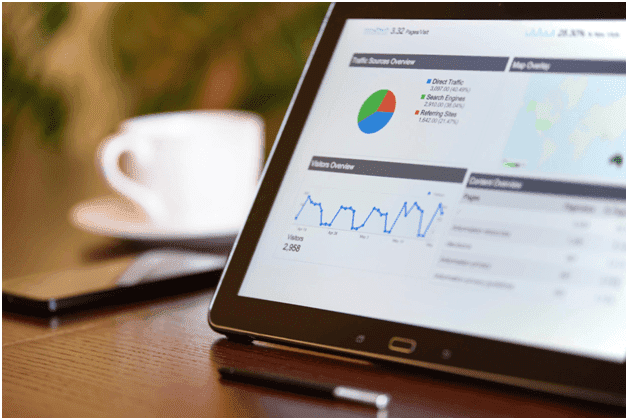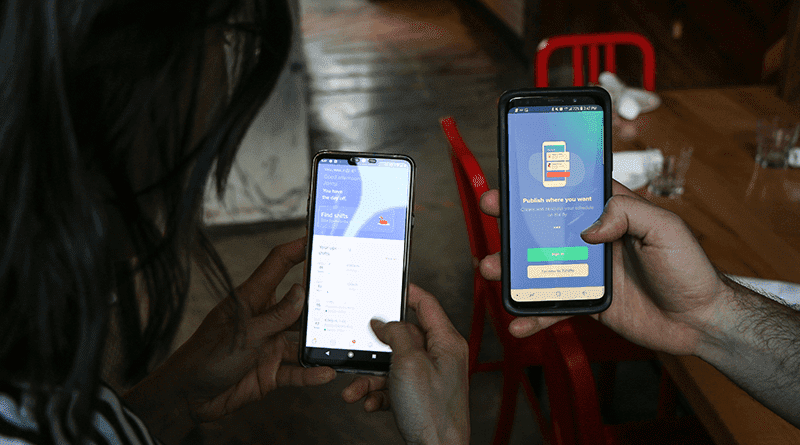These days, mobile applications are becoming very common among businesses. Everyone is eagerly investing their resources in a fancy, creative mobile application for their brands’ customers. But why?
Typically, when a customer downloads an app, they end up making a purchase or carrying out a transaction using your app. That is why a mobile app is one of the many marketing strategies that businesses adopt worldwide.
However, launching a mobile app itself is not enough. You need to keep track of exactly how effective this marketing campaign of yours has been and how much it is actually contributing to your business’s success.
What Is Mobile Attribution?
Mobile attribution is a way of determining how your customers end up downloading and using your mobile app for various purposes, and how they behave during these processes.
Essentially, it acts as a bridge between two crucial points in time – a) the moment when a user taps an ad for your app and b) the moment when the customer actually downloads your app.
With mobile attribution, you can collect critical data about your users’ behaviour and interaction patterns in order to carry out important business analyses and decisions.

Attribution is not only carried out for mobile apps but also for web activity. The process of online attribution is conducted via some well-known means. A common method is to track clicks by customising the URLs with special parameters or to use cookies. Another way is by using pixel tags. These web attribution methods, however, don’t work for mobile apps because of several reasons. We will talk about considerably successful models of mobile attribution shortly.
Related: 5 Best WordPress Plugins To Convert A Website In A Mobile App
Why Is Mobile Attribution Important and How Does It Work?

Why It Is Important?
Suppose your marketing model is designed to work in such a way that when a customer searches for your brand name and expresses the wish to buy something from you, the search results that they obtain direct them to the app store. The app store acts as a reliable platform which your customers can go for downloading your app. In the app store, they are prompted to download your app so that they can easily make the purchase that they originally intended to.
That was just one way to direct your potential customers to your app. Another way to make your target market reach your app could be via an ad you placed on a social networking website. There could be countless other routes leading to the product you have showcased in the app store.
After you are done with the promotion and marketing of the app itself, what comes next?
Now, you may know how to track the clicks on a particular advertisement or promotional link that leads to your app. However, once your customer is in the app store, you will be blindsided. App store owners such as Google and Apple do not allow businesses to track any attribution data related to their app downloads within their stores. Therefore, you may need intermediary tools and apps that will act like buffers between your advertising links and the app stores so that you can trace your customers’ pathways.
Another reason why mobile attribution is crucial is that you need answers to questions such as:
- Which advertising channels are most successful?
- Which parts of the app do your customers like the most?
- Which features do your customers not use as much?
- Which, if any, of your in-app ad campaigns are successful?
The advertising channels that are more popular or generate more leads would deserve more attention, so you can invest more time and money into them. Furthermore, you could also work on those channels that turn out to be not-so-successful in order to improve them.
Similarly, when it comes to app features, more focus would need to be diverted to those that are more popular among the target audience. Unpopular features could be removed completely. From among the in-app marketing and advertising campaigns, those that generate the least revenue could be replaced with other more beneficial campaigns.
Once you work out these details, you can work on improving your app to cater to your customers’ needs in a better manner, resulting in a win-win situation for you and your customers.
How It Works?
Let us take you through the technical aspects of the process of mobile attribution.
The entire process – starting from the point where a customer taps on the download link for your app and ending with that customer performing a measurable action within the app – requires that you collect highly valuable data related to each and every action taken by the customer.
Now, these random intervals where you choose to collect customer data are called data points. Depending on your business and data requirements, you can choose as many or as few data points as you need. You must make sure that the data you are gathering from each of these data points will be of use to you later when you are making important marketing decisions for the future of your business.
An example of device fingerprinting
Device fingerprinting refers to the process of identifying a particular device that is involved in your ad campaigns. Once a device has been “fingerprinted”, you can target it individually with custom ad campaigns. You can find out how that particular device’s user has been behaving across the internet in the past, and then choose to target them with ads depending on that behaviour.
You might be wondering how device fingerprinting is useful for the process of mobile attribution.
Take a look at the following scenario, where you purchase the services of a third-party attribution provider and integrate their SDK into your app.
What happens next?
- A customer taps on an ad for your app.
- The unique advertising ID is immediately picked up and sent to the attribution provider’s platform.
- The device’s IP address and other details that are available in its publicly available HTTP header are also forwarded.
- Similarly, to further identify this device, its browser and operating system IDs will be also sent.
- A timestamp is generated at the moment the customer taps on the ad.
- There is some lost time between the moment of tapping and the moment of installation and opening of the app.
- As soon as the customer installs and opens the app, these same details are collected again and sent to the server.
- These new details are crosschecked against all the previously collected data on the server.
- The timestamps are used in order to make sure that the match falls within the attribution window. For example, it is possible that a user may have clicked on an ad in a hurry but did not find time to download the app right away. So, they downloaded it at a later time. Three days after they actually saw the ad, maybe. For such cases, an attribution window is decided upon beforehand. If the match falls within this window, then you can attribute this particular conversion to the customer data that you initially recorded.
That is often how the mobile attribution process typically works.
Related: How Advertisers Can Engage Mobile Audiences Across Various Devices?
What Are Some of the Best Mobile Attribution Models and Tools?
Since there are no standard procedures or rules that you can apply to your mobile attribution strategy, the process can prove to be a little tricky. However, there are a few models that are commonly followed in the industry:
- First or last touch model: Since you can record what links or ads your customers tapped on in order to reach your app, you can give the entire credit for a particular customer’s transaction to either
a. The first item they tapped on, where they began their journey towards your app or
b. The last item they tapped, right before they performed a transaction. - Multi-touch or fractional attribution: This is where you take into consideration a number of various factors that may have contributed to a particular customer performing a transaction. This model may get a little too complicated but it provides a more holistic view of your customer’s journey. When it comes to what influences an individual’s choices and behavior, it may not at all be black and white. It is only logical to consider all the factors that could have potentially influenced them.

Some popular mobile attribution tools:
We have for you a few big names in the world of mobile attribution:
- Branch
- Adjust
- Kochava
- Appsflyer
These SDKs offer various functions and features for app owners, including affordability, easy-to-use dashboards, connectivity to your BI tools, in-app analyses (both quantitative and qualitative), cohort analysis, reliable third-party integrations, user session recording in the form of reports and touch-based heat-maps, cross-device tracking, and even fraud prevention.
A Quick Recap
With the right combination of data points, you can extract valuable information with the help of the mobile attribution process. This data, combined with the right tools, can then be used to settle on the best marketing channel for your business and can also lead to a highly optimised mobile app.
Slowly but surely, you will see greater returns on your investments!







